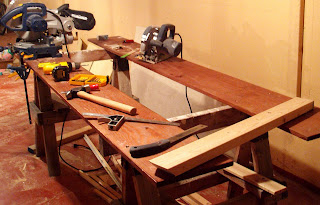When I was young I had this (foolish?) notion that houses were all built to common standards for energy efficiency, maximum longevity and precision quality. Naive, for sure, but maybe also ahead of my time – as now the green movement has helped bring at least energy efficiency to the fore.
Not everyone might share my opinion on what constitutes cheap, poor quality or just plain annoying, but I bet no one will say they actually appreciate these qualities. Of course, I won't be surprised if my house has more flaws than others too!
How many of these are amongst your list of pet peeves?
- Narrow doorways
- Too few power outlets
- No extended warranty
- Drafty electrical outlets
- Derailing sliding closet doors
- Disintegrating carpet backing
- Dirt collecting siding material
- Inaccessible wiring & plumbing
- Thin, light & hallow interior doors
- Painted plastic moldings, corner bead
- Unusably small wiring boxes & plumbing spaces
- Lack of extended awnings over exterior stair landings
- Bifold doors, bifold door tracks, bifold doors, bifold doors, bifold doors, etc.
- Poor use of natural elements - winter sun/summer shade
- Ineffective or high maintenance roof drainage systems
- Exposed concrete around external base of house
- External ornamental shutters discolouring siding
- Uninsulated joints between floor levels
- Hard to open screen door windows
- Negligent surface water control
- Ugly exterior aluminium joints
- Difficult access to furnace filter
- Inflexible wall configurations
- Poor heating vent locations
- Undocumented fuse panels
- Limited exterior lighting
- Wall/ceiling joint cracks
- Unpainted spackeling
- Ugly doorbell covers
- And most of... no laundry chute! ;-)
- I'm sure there are more!
Sure, some of these are just annoying and fixable, but many are things I am stuck with for a long time. Wiring and drafts are two of my favourites to hate. When you are in a house that is "finished" already, there is little hope for overhauling these areas. Which ones from this list, or your own, are making you think bad thoughts?
While I can't say I hate my house, I can certainly relate to a lot of Tanya writes in this post/rant.
It wouldn't be so bad if there was more professional help available, at least in my area, that could come help patch up a few of the fixable things. Alas, I fear they are too busy helping to clone more copies from the same residential gene pool.
Are there better houses elsewhere in the world?

